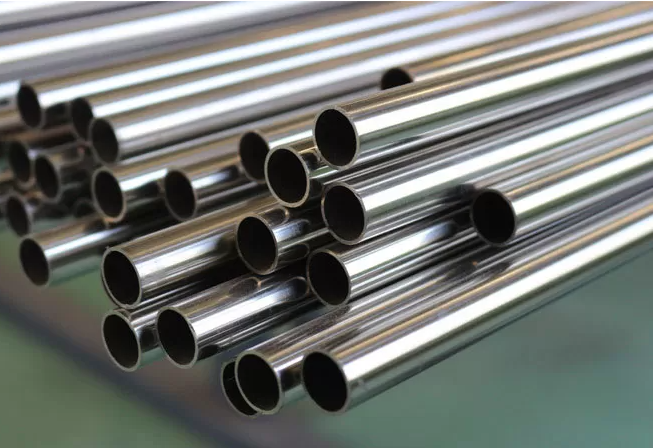In the field of industrial pipelines, stainless steel pipes and alloy steel pipes are like twin brothers. They have a material science relationship, but also have completely different performance characteristics due to the subtle differences in element formulas. The application selection of these two materials is directly related to the reliability and economy of the engineering system. In key fields such as petrochemicals, energy and electricity, and mechanical manufacturing, engineers need to weigh the performance parameters of the two like a precision scale to ensure that the material properties and the service environment are perfectly matched.

1. Material genes determine performance differences
The core code of stainless steel pipes lies in the passivation protective layer formed by its chromium content (more than 12%). This self-repairing oxide film gives it excellent corrosion resistance at room temperature. The typical composition of 304 stainless steel (06Cr19Ni10) contains 18-20% chromium and 8-10.5% nickel. This austenitic structure gives the material excellent formability and weldability. Duplex stainless steel 2205 shows unique advantages in chloride environments through the ratio of 22% chromium, 5% nickel and 3% molybdenum.
The gene map of alloy steel pipes is more complex. Heat-resistant steels such as SA335 P91 contain 8-10% chromium and trace elements such as molybdenum, vanadium, and niobium, and form high-temperature strength through solid solution strengthening and precipitation strengthening. Its carbon content (0.08-0.12%) is significantly higher than that of stainless steel. This difference in composition causes the material to maintain stable creep strength above 500°C, but sacrifices some corrosion resistance.
The difference in crystal structure creates very different mechanical performances. The elongation of austenitic
stainless steel can reach more than 40%, while martensitic alloy steel can obtain 1000MPa tensile strength through quenching and tempering. This division of mechanical properties directly determines the application limits of the two in pressure-bearing systems.
2. Practical division of application scenarios
In the field of chemical equipment, stainless steel pipes show irreplaceable advantages in acetic acid synthesis units. The molybdenum element of 316L stainless steel enhances the ability to resist pitting corrosion and can resist corrosion from chlorine-containing media. In a PTA unit, the process medium contains 4% hydrogen bromide and trace acetic acid. The stress corrosion cracking problem is successfully solved by using 254SMO super stainless steel pipe (6% molybdenum).
In high temperature and high pressure scenarios,
alloy steel pipes show the kingly style. The main steam pipeline of a supercritical power station uses P92 steel (9% Cr-1.8% W), which has been running continuously for 100,000 hours without failure at 620℃ and 30MPa. This material is strengthened by Laves phase, and its high temperature strength is 20% higher than that of traditional P91, and the wall thickness can be reduced by 15%, which significantly reduces thermal stress.
The selection logic in extreme environments follows the principle of "performance first". Under the low temperature condition of -162℃ at the LNG receiving station, the austenite stability of 304 stainless steel ensures that no brittle transformation occurs; while the deep-sea drilling riser uses S135 alloy steel, whose 550MPa yield strength can withstand 3000 meters of water pressure, and the surface nickel-based alloy cladding layer provides double protection.
3. Balance between economy and sustainability
In terms of initial cost, the unit price of ordinary 304 stainless steel pipe is 5 times that of 20# carbon steel, while the price of P91 alloy steel pipe is 2 times that of 304. The calculation of a certain oil refining project shows that the use of stainless steel instead of alloy steel under working conditions below 350℃ can reduce the life cycle cost by 18%. This cost difference is due to the material smelting process. Alloy steel requires precise trace element control and complex heat treatment.
Maintenance cost accounting requires the introduction of a full life cycle analysis method. The North Sea oilfield jacket uses duplex stainless steel pipes, and the 30-year maintenance-free design saves $12 million in anti-corrosion costs. On the contrary, a high-temperature pipeline in a power plant was embrittled at 540℃ due to the wrong selection of 304 stainless steel, resulting in σ phase embrittlement at 540℃, resulting in unplanned downtime losses of 8 million yuan.
The trend of green manufacturing promotes material innovation. New nickel-saving stainless steel (such as 204Cu) replaces part of nickel with 1.5% copper, reducing costs by 20% while having equivalent performance. In terms of recycling, the value of stainless steel waste is 10 times that of carbon steel. A stainless steel factory has achieved a scrap steel utilization rate of 95% through the electric arc furnace + argon oxygen decarburization process.

